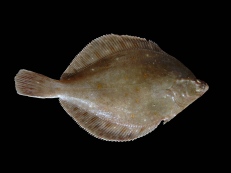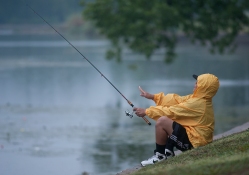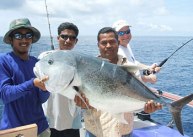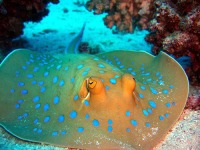 Plaice, a common fished flatfish, has 4 key varieties: European, American, Alaskan and Scale-Eyed. The most commercially important of the 4 key varieties is the European due to it being a common serving in English sea food restaurants.
Plaice, a common fished flatfish, has 4 key varieties: European, American, Alaskan and Scale-Eyed. The most commercially important of the 4 key varieties is the European due to it being a common serving in English sea food restaurants.
European plaice are a right-eyed flounder of the Pleuronectidae family. Living in the sand bottoms of the European shelf, these plaice are, as previously stated, commercially important due to their taste and availability to be consumed. European plaice can be found in many places and range from the Barents sea to the Mediterranean sea. A good way to identify European plaice is by their smooth, brown skin and their characteristic red spots and bony ridge positioned behind their eyes. These plaice can be found as deep as 200 feet and feed on polychaete, crustaceans and bivalves. The best time to fish for European plaice is at night because they move to shallow waters to feed whereas in the day they bury themselves in the sand on the ocean floor.
As food, plaice is most commonly eaten in Danish and North-German cuisine. There are several ways which plaice are most commonly prepared, including: filleted, battered, and pan-fried. Each of these ways of serving the fish is popular both hot and cold and is often enjoyed within sandwiches. In Britain, plaice is often an option as the fish side of the dish in the popular fish and chips combination meal.
Plaice are currently listed as “outside safe biological limits” by the ICES, they are also growing less quickly now and are regularly caught at the age of six when they can grow to be 40 years old. This means fishing of plaice for commercial use should be monitored as it is unsafe to let the population dwindle. However, fishing of plaice on a personal scale is fine, especially if you are using a catch and release method.


 Deep sea fishing can make for a particularly fun day out, providing that the fish want to bite that is. So here I will tell you some of the best places that you can go deep sea fishing in the world.
Deep sea fishing can make for a particularly fun day out, providing that the fish want to bite that is. So here I will tell you some of the best places that you can go deep sea fishing in the world. Below are the upmost poisonous fish that roam below the depths of the blue abyss. You probably don’t want to catch the fish on this list, they may end in a bad time for you. However, it is better to know about them and be safe than to not know about them and make a mistake. Without further ado, let’s get on with the list.
Below are the upmost poisonous fish that roam below the depths of the blue abyss. You probably don’t want to catch the fish on this list, they may end in a bad time for you. However, it is better to know about them and be safe than to not know about them and make a mistake. Without further ado, let’s get on with the list. It all kicked off on Sunday October 12th on an absolutely beautiful day, where the good weather had turned up along with 3 more anglers than last year. Despite a larger turn out than last year, the flatfish, once again, failed to make much of an appearance. It was again time for the annual Osprey Open (Or flatfish festival as it’s otherwise known) fishing festival held in Pembroke dock by the Osprey Sea Angling Club. Gifted with an easterly wind and a fairly settled sea, the dogfish seemed to be giving themselves up to the anglers which could have been due to the outgoing tide for the first 3 hours accompanied by the warmth in the air.
It all kicked off on Sunday October 12th on an absolutely beautiful day, where the good weather had turned up along with 3 more anglers than last year. Despite a larger turn out than last year, the flatfish, once again, failed to make much of an appearance. It was again time for the annual Osprey Open (Or flatfish festival as it’s otherwise known) fishing festival held in Pembroke dock by the Osprey Sea Angling Club. Gifted with an easterly wind and a fairly settled sea, the dogfish seemed to be giving themselves up to the anglers which could have been due to the outgoing tide for the first 3 hours accompanied by the warmth in the air.